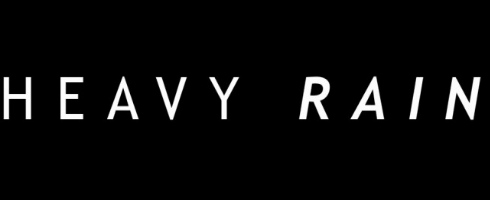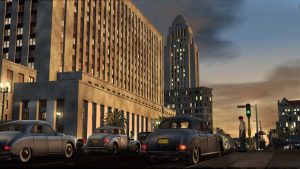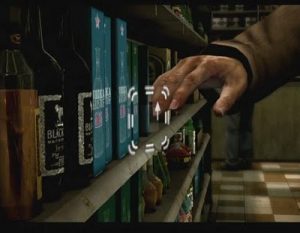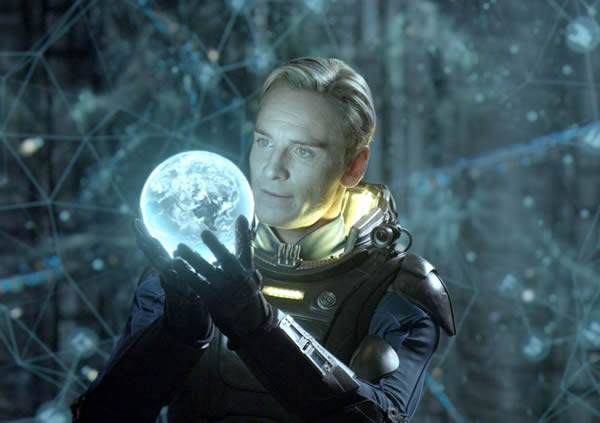
The comparisons between Heavy Rain and L.A. Noire were bound to be drawn – while each does definitely have a unique spin on the detective/mystery genre, it’s impossible to ignore the similarities. Well, now that I’ve had a chance to really dig into L.A. Noire, I feel confident enough to stack up these titles against each other and investigate (I couldn’t resist) the mystery of which game is better. Before I get down to the question though, allow me to introduce the contenders.
L.A. Noire (2011) Team Bondi/Rockstar Games
In one corner, Cole Phelps, policeman extraordinaire, makes the rounds through a few of LAPD’s toughest detective desks in 1947’s Los Angeles, working his way from lowly beat cop to detective in the traffic, homicide, vice, and arson divisions. Comic Booked’s own Robb Orr gave the official review for L.A. Noire over the weekend and, for the most part, I agree with a lot of his judgments. L.A. Noire‘s facial recognition technology allowed the developers to bring in actors to give performances and breathe some life into the game, rather than just hiring a voiceover crew and recording lines in a studio.
Heavy Rain (2010) Quantic Dream
 In the other corner, last year’s critically adored mystery game puts players into the shoes of four individuals, Ethan, Madison, Norman, and Scott, as they each work to solve the case of the Origami Killer, a serial killer who abducts little boys and leaves them to drown. Ethan’s son Shaun is the latest abductee and he gets sucked into a deadly game of cat-and-mouse by the aforementioned serial killer, which is arguably the main plot of the game. Madison, Norman, and Scott all have a full story and role in the Origami Killer’s plot but, for the purpose of keeping this review relatively spoiler-free, I won’t discuss them. Success in Heavy Rain relied on reflexes (in order to successfully Quick Time Events, the game’s primary action mode) and investigative prowess. While not nearly as detailed as L.A. Noire‘s facial capture technology, Heavy Rain’s character models and faces also received high praise from critics.
In the other corner, last year’s critically adored mystery game puts players into the shoes of four individuals, Ethan, Madison, Norman, and Scott, as they each work to solve the case of the Origami Killer, a serial killer who abducts little boys and leaves them to drown. Ethan’s son Shaun is the latest abductee and he gets sucked into a deadly game of cat-and-mouse by the aforementioned serial killer, which is arguably the main plot of the game. Madison, Norman, and Scott all have a full story and role in the Origami Killer’s plot but, for the purpose of keeping this review relatively spoiler-free, I won’t discuss them. Success in Heavy Rain relied on reflexes (in order to successfully Quick Time Events, the game’s primary action mode) and investigative prowess. While not nearly as detailed as L.A. Noire‘s facial capture technology, Heavy Rain’s character models and faces also received high praise from critics.
Round 1: Plot
Arguably, the most important factor that the developer of a mystery game needs to consider is plot, and both games have plenty of it. Heavy Rain has a very focused narrative- at no point did I feel like any of the side plots, discovered through dutiful investigation, were distracting from the main story. You’re working on a very specific time table within Heavy Rain, and the urgency is almost palpable, even at the game’s most “relaxing” moments. The story unfolds beautifully (so long as you’re actually on the right track with your investigation) and the finale is positively fascinating. L.A. Noire suffers a bit from a strange story progression. Cole’s career progress from beat cop to traffic detective to homicide detective is fun; however, after homicide, you get re-assigned to the vice desk and the story loses a bit of its “oomph.” There was less interviewing to do and more driving across Los Angeles, which, given the in-game city’s massive scale, is no easy feat. There are some interesting moments in the last two desks, but it never quite recovers the intensity and intrigue of the homicide desk.
Victory: Heavy Rain
Round 2: Graphics & Visual Style
L.A. Noire is going to make Rockstar a boat-load of money. No matter how many copies the game sells, Rockstar is going to make a massive amount of cash when they sell the facial capture technology developed for the game – and rightfully so. L.A. Noire’s faces are easily the most detailed I’ve ever seen in a game. Characters are alive and the performances given by the actors behind them are conveyed perfectly. This facial capture technology is going to catapult the industry forward and further legitimize the claim that video games are most definitely an art form. The development team has faithfully recreated 1947’s downtown L.A. with astonishing detail. I’ve been playing Rockstar’s games since Grand Theft Auto III came out and I can honestly say that this is the first time I’ve been unable to remember one of their cities, and that’s due to the scale of it. Normally, it takes a few hours of goofing around in a car (and murdering countless pedestrians with my trademarked reckless driving style) for me to “learn” a Rockstar city; that is, after some time, I can identify landmarks, streets, and buildings and formulate the best routes to get from Point A to Point B. I have a great sense of direction and familiarity when I’m behind the wheel (both in-game and in real life). L.A. Noire’s city is still as strange and intimidating to me as it was when I first booted the game up. While the feel of Los Angeles has been perfectly translated into the game, I am sad to report that the look of the environments is rather disappointing. The graphics, though not “amateur” by any stretch, aren’t really anything special. It doesn’t really look much different than Grand Theft Auto IV and is replete with pop-in issues. Everything is crisp and edges are well-defined, but I feel like they could’ve done a lot better with the overall graphic presentation. At the end of the day, despite the detail of the environment, I didn’t feel like L.A. Noire fully realized its goal of immersing me in the visual and auditory world of 1947’s Los Angeles.
their cities, and that’s due to the scale of it. Normally, it takes a few hours of goofing around in a car (and murdering countless pedestrians with my trademarked reckless driving style) for me to “learn” a Rockstar city; that is, after some time, I can identify landmarks, streets, and buildings and formulate the best routes to get from Point A to Point B. I have a great sense of direction and familiarity when I’m behind the wheel (both in-game and in real life). L.A. Noire’s city is still as strange and intimidating to me as it was when I first booted the game up. While the feel of Los Angeles has been perfectly translated into the game, I am sad to report that the look of the environments is rather disappointing. The graphics, though not “amateur” by any stretch, aren’t really anything special. It doesn’t really look much different than Grand Theft Auto IV and is replete with pop-in issues. Everything is crisp and edges are well-defined, but I feel like they could’ve done a lot better with the overall graphic presentation. At the end of the day, despite the detail of the environment, I didn’t feel like L.A. Noire fully realized its goal of immersing me in the visual and auditory world of 1947’s Los Angeles.
Heavy Rain is another mixed-bag when it comes to graphics. As I said above, the faces in Heavy Rain are quite excellent, though they’re not nearly as detailed as those in Heavy Rain. Still, the character models in Heavy Rain are excellent. That being said, the game suffers from the same environmental mediocrity as L.A. Noire. Again, the graphics aren’t bad, but they leave a lot to be desired; however, the visual atmosphere is bleak and depressing and contributes excellently to the overall experience of the game. By the end of the game, you’ll feel a desperation and depression akin to the experience of being stuck in a city that is just being absolutely pounded by rain, something with which I can currently sympathize.
Victory: Tie! While L.A. Noire‘s tech surpasses the capabilities of Heavy Rain, the latter surpasses the former in terms of visual atmosphere.
Round 3: Characters
Cole Phelps, the star of L.A. Noire, is a wunderkind, a person who has achieved a relatively high amount of success for their age. At a young age, he has risen quickly through the ranks of the LAPD and led a successful tour of duty as an officer in the Marine Corps during World War II. To top it all off, Phelps is most definitely a Renaissance man – showing off extensive knowledge in several different fields as you progress through the game. For these reasons, I found it very difficult to actually like Cole. He’s an intensely private man with a penchant for going “by the book.” Cole’s partners are all mostly unlikable fellows, with the exception of Berkowski, your partner in the traffic desk. I felt no attachment to any of the characters at any point in the story.
Heavy Rain‘s main characters, by contrast, are fully developed, interesting people. I suppose that having four main characters makes it easy to have a character that players can attach themselves to; however, Quantic Dream did a great job of making four, likable, relatable characters with great back stories. This effort pays off handsomely – I felt emotionally connected and invested in Heavy Rain’s characters and their stories.
Victory: Heavy Rain
Round 4: Game Play
Heavy Rain‘s game play was an interesting blend of investigation and Quick Time Events, while L.A. Noire is all detective legwork, which blends investigation and interrogation; however, the action is wrapped up inside familiar packaging: the Grand Theft Auto engine. I felt that the investigation methods in both games were relatively similar: walk around a crime scene spamming your search button over every square inch. Heavy Rain‘s intuitive use of of Quick Time Events goes beyond the regular “Hit X, Hit Triangle, Hit Circle!” nonsense that most games utilize. Using the analog sticks, you need to perform complex motions that mimic their real life counterpart. A later patch allowed Playstation Move owners to use their devices as an alternate control method for the game. L.A. Noire‘s interrogation was fun, even if it was a bit tricky at times. While investigating suspects, you have three choices: you can believe what they’re saying, doubt them, or accuse them of lying. Of course, if you accuse a suspect of lying, you need to back that claim up with some evidence, which you may or may not have found while investigating a crime scene. Sometimes accusing a person of lying is tricky. There were a few occasions where I knew part of a suspect’s story to be false and had the evidence to back it up but, when I accused them of lying, Cole questioned a different part of their story than I wanted him to. Rockstar gives you the option to back out of an accusation if you don’t have the evidence you need to catch a suspect in a lie but, then you find yourself in an awkward moment of silence with your suspect. With all this in mind, I really enjoyed the different angles that each game brought to the table.
Using the analog sticks, you need to perform complex motions that mimic their real life counterpart. A later patch allowed Playstation Move owners to use their devices as an alternate control method for the game. L.A. Noire‘s interrogation was fun, even if it was a bit tricky at times. While investigating suspects, you have three choices: you can believe what they’re saying, doubt them, or accuse them of lying. Of course, if you accuse a suspect of lying, you need to back that claim up with some evidence, which you may or may not have found while investigating a crime scene. Sometimes accusing a person of lying is tricky. There were a few occasions where I knew part of a suspect’s story to be false and had the evidence to back it up but, when I accused them of lying, Cole questioned a different part of their story than I wanted him to. Rockstar gives you the option to back out of an accusation if you don’t have the evidence you need to catch a suspect in a lie but, then you find yourself in an awkward moment of silence with your suspect. With all this in mind, I really enjoyed the different angles that each game brought to the table.
The thing that sets Heavy Rain apart here is the do-or-die element of the story. See, in Heavy Rain, once your character dies, they’re gone for good. Their part in the story ends and you move forward. If all four characters die before you reach the conclusion, then that’s it – you just don’t figure out the mystery of the Origami Killer. This threat really makes Heavy Rain a pulse-pounding adventure. There are a lot of intense action scenes in the game where your characters are mere moments away from death. In these moments, I experienced a lot of anxiety and fear. Heavy Rain is also pretty unforgiving. If you miss a crucial piece of evidence, then your progress through the story is de-railed a bit. Case in point: I missed one piece of evidence during one of my investigations with Norman, who is an FBI agent trying to crack the Origami Killer case, and, as a result, I didn’t discover the identity of the killer until just before the finale, which resulted in one of my characters dying. If I had found that piece of evidence, then Norman would have been able to discover the identity of the killer and I would have finished the game with all four characters alive. L.A. Noire fails in this regard – more often than once, I miserably failed in the interrogations, getting one or no questions correct but was still able to get enough information to move forward with my case. I missed a lot of evidence in my first few traffic desk cases, but I was still able to solve the case. I felt like L.A. Noire was holding my hand a lot, moving me forward when I didn’t deserve it, and pointing me in the right direction whenever I made a misstep.
Victory: Heavy Rain
Round 5: Overall Quality
A decent play-time for L.A. Noire‘s main story (not including the DLC, sightseeing objectives, and street crime scenarios) is between 15 and 20 hours. The story wraps itself up nicely, and Rockstar can easily expand on the game with DLC in the future (upon release, there were a few cases available on the XBL Marketplace and PSN store, plus a free one that came with each version). The ending was a bit unsatisfying, but that’s because L.A. Noire was a bunch of smaller cases with a few extended story arcs. L.A. Noire‘s dramatic performances will undoubtedly be remembered for years to come – Rockstar has really set the bar high for character development thanks to their new technology. That being said, L.A. Noire is an ambitious title with a lot of great ideas but some lackluster execution. The story goes flat after a little while and the characters, though brilliantly acted, are boring and beckon no attachment. There are a few action sequences, but they’re either car chases or foot chases. I felt a bit like Danny Glover’s Lethal Weapon character every time a suspect made a run for it, grumbling to myself “I’m gettin’ too old for this shit,” and reluctantly giving chase. I would definitely like to see a sequel, but the there’s a lot that Rockstar and Team Bondi need to correct in a possible second outing.
Assuming you have at least one character that makes it to Heavy Rain’s finale, a decent play-time is between 10 and 12 hours. That number increases the longer your four characters survive and decreases when they die (especially if one of your characters dies in the first hour or two of gameplay, which, if memory serves me correctly, is possible for two of them). The story is incredibly interesting and I felt sucked in almost immediately. There are frequent plot twists and they really help to keep the momentum going. The last few hours are a frantic experience – there’s hardly time for you to catch your breath. The Quick Time Events are challenging, refreshing, and, most importantly, appropriately used. There doesn’t seem to be much of a future for Heavy Rain, though. A DLC expansion called The Taxidermist was released, but it received lukewarm reviews. Quantic Dream has expressed little interest in a sequel. Still, Heavy Rain was a great game that had a unique spin on the murder mystery genre.
Victory: Heavy Rain
Don’t get me wrong – L.A. Noire is still a good game, definitely worth your time, especially if you’re a fan of Rockstar; however, I felt that Heavy Rain was a much better project. The ultimate victory for Heavy Rain came in characters and story – two of the most important elements of a mystery game, I would argue.
Am I totally off-base? Defend L.A. Noire or let me know your opinion of the games in the comments!


















Wow, that is an impressive piece of work! Keep it up!
I'm never buying a game again without first consulting you. Love the 5 round breakdown!
Great stuff! I think Heavy Rain is much more atmospheric, and LA Noire more of a technical achievement. I really enjoyed reading this!
Spot on. L.A. Noire is a great game that never quite adds up to being greater than the sum of its parts.
Heavy Rain was spectacular–an unforgettable, emotionally absorbing experience which grabs you from the first scene and never lets go. There is nothing on the market today that can compare to Heavy Rain. There is no game I am eagerly anticipating more than the next offering from Quantic Dream.
Wow. Way off base. LA Noire is a game with good acting and real detectIve work. Heavy Rain was a schlocky melodrama with bad acting and numerous plot holes that periodically asked the player to mash buttons.
Spot on! I completely agree. Heavy Rain is the winner!
good job! It rally helped me
Well done! Heavy Rain's only fault was the ridiculously slow movement and turning of the characters but story-wise it was a masterpiece. LA Noire not a bad game but as you said tries to help you too much. Any misstep leads to little or no consequence. Still, if you have the means then get both!
I'm currently loving Heavy Rain, and think you were a little nit-picky about the graphics. Probably my biggest disappointment so far is that you can only make the father, and the journalist pee. I wanted to make all the characters go to the bathroom. And why not number 2? Wiping would make wonderful use of the six axis controller or the move.
That said you review has sold me on both, I'll prolly pick up LA Noir now.
– SPOILER –
The chick drips dry
LA Noire hands down. Both are sipping wines not chugging wines. Both try to draw you into the story by "role playing", in the plain sense of the words, the characters. They are a bit delicate – too much trying to understand and beat the system rather than just enjoying the ride can spoil the game. But Heavy Rain is much more fragile – it creates an illusion of control with its illusions of branching narrative and multiple endings, but in a very constricted world. If you see through the illusion, it can be real irritating. LA Noire on the other hand just offers a linear story in an open world, but one where playing well is clearly defined (rather than a few critical and completely obscure button mashings) and enjoyable as you get there.
LA Noire clearly has better graphics, visuals and gameplay. The author of this article is obviously a Heavy Rain fanboy or a complete retard.